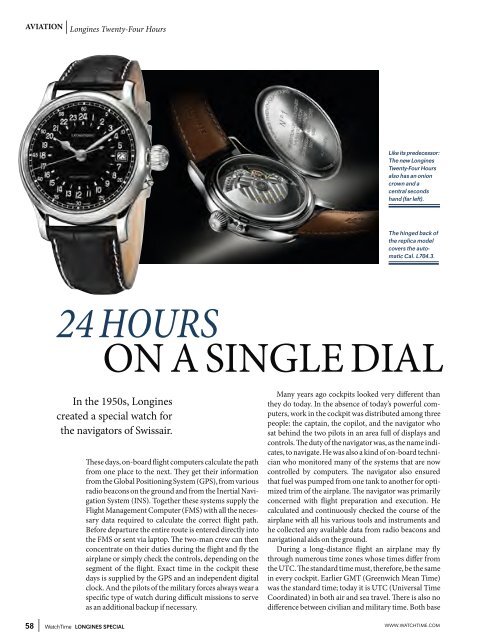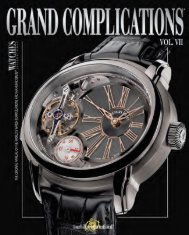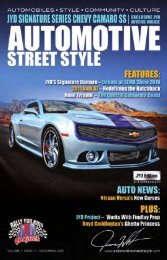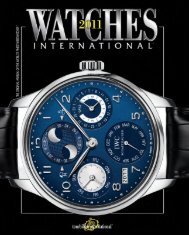180 YEARS OF
180 YEARS OF
180 YEARS OF
You also want an ePaper? Increase the reach of your titles
YUMPU automatically turns print PDFs into web optimized ePapers that Google loves.
AVIATION | Longines Twenty-Four Hours<br />
58 | WatchTime LONGINES SPECIAL<br />
ON A SINGLE DIAL<br />
In the 1950s, Longines<br />
created a special watch for<br />
the navigators of Swissair.<br />
ese days, on-board ight computers calculate the path<br />
from one place to the next. ey get their information<br />
from the Global Positioning System (GPS), from various<br />
radio beacons on the ground and from the Inertial Navigation<br />
System (INS). Together these systems supply the<br />
Flight Management Computer (FMS) with all the necessary<br />
data required to calculate the correct ight path.<br />
Before departure the entire route is entered directly into<br />
the FMS or sent via laptop. e two-man crew can then<br />
concentrate on their duties during the ight and y the<br />
airplane or simply check the controls, depending on the<br />
segment of the ight. Exact time in the cockpit these<br />
days is supplied by the GPS and an independent digital<br />
clock. And the pilots of the military forces always wear a<br />
specic type of watch during dicult missions to serve<br />
as an additional backup if necessary.<br />
Like its predecessor:<br />
The new Longines<br />
Twenty-Four Hours<br />
also has an onion<br />
crown and a<br />
central seconds<br />
hand (far left).<br />
The hinged back of<br />
the replica model<br />
covers the automatic<br />
Cal. L704.3.<br />
Many years ago cockpits looked very dierent than<br />
they do today. In the absence of today’s powerful computers,<br />
work in the cockpit was distributed among three<br />
people: the captain, the copilot, and the navigator who<br />
sat behind the two pilots in an area full of displays and<br />
controls. e duty of the navigator was, as the name indicates,<br />
to navigate. He was also a kind of on-board technician<br />
who monitored many of the systems that are now<br />
controlled by computers. e navigator also ensured<br />
that fuel was pumped from one tank to another for optimized<br />
trim of the airplane. e navigator was primarily<br />
concerned with ight preparation and execution. He<br />
calculated and continuously checked the course of the<br />
airplane with all his various tools and instruments and<br />
he collected any available data from radio beacons and<br />
navigational aids on the ground.<br />
During a long-distance ight an airplane may y<br />
through numerous time zones whose times dier from<br />
the UTC. e standard time must, therefore, be the same<br />
in every cockpit. Earlier GMT (Greenwich Mean Time)<br />
was the standard time; today it is UTC (Universal Time<br />
Coordinated) in both air and sea travel. ere is also no<br />
dierence between civilian and military time. Both base<br />
WWW.WATCHTIME.COM

















